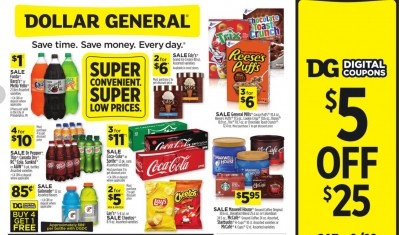Targeted digital advertising campaigns focused on specific goals help brands reach shoppers at home

To ensure online campaigns command a strong return on investment, companies need to first clearly define their goals and then identify which aspects of digital marketing will best help them achieve the desired results, Digilant VP of paid media Mike Addonizio told FoodNavigator-USA.
“I know it sounds really basic, but companies need to take time to think of a strategic plan when it comes to digital. There are a lot of companies out there right now that are quickly shifting dollars to digital and taking a ‘lets see what happens’ approach,” he said.
But that is akin to tossing spaghetti on the wall to see what sticks and what doesn’t, which can lead to a significant mess, tremendous waste and no intelligible insight about what works and what doesn’t.
Goals influence channel mix
A better approach is to first identify concrete objectives and measurements of success that can be attributed to digital, and then identify the best channels and tactics to achieve those goals, Addonizo said.
For example, a startup with little brand awareness may prioritize driving scale and optimizing visibility by pairing with a well-established and trusted online retailer, such as Amazon, rather than pushing a direct-to-consumer platform that consumers don’t know about or might not trust, Addonizo said.
“If you’re a small startup looking to scale fast, you can oftentimes find faster growth by partnering with a retailer like Amazon and tapping into its audience, which you otherwise wouldn’t have access to,” he said, explaining, “It’s sometimes hard for consumers to trust a brand or a website that you’ve never seen before, but most people know Amazon, they trust the reviews, they understand the app or website and are more willing to try something new they discover there.”
The tradeoff is limited access to consumer data or the ability to target new shoppers to encourage repeat purchases, Addonizo said. Likewise, he noted, retailers like Amazon also will eat into already tight margins.
However, he added, an attribute of digital is it is more nimble than traditional advertising and therefore companies can use third-party retailers to jump start sales and brand awareness and as those grow they can wean themselves off those channels in favor of DTC.
“This is something we love to help our clients figure out,” Addonizo said.
DTC offers clarity into consumers
With that in mind he recommends more established brands and scaling startups redirect consumers to buy directly from them, which will give them more flexibility around their margins and more clarity into who is buying their product and why. This in turn opens more options for ongoing communication.
To effectively drive consumers to branded websites and ecommerce platforms, brands need to go to know who their consumer is and where they are, so that they can advertise directly to them, rather than relying on search or discovery capabilities of online retailers.
According to recently published research by Digilant, a safe bet for connecting with consumers online is through streaming services, of which subscriptions and usage have surged more than 40% during the pandemic, or in-apps in the entertainment, e-commerce, social and messaging categories, which have grown 40% year-over-year.
To make the most of these, Digilant’s report recommends brands geo-target advertising to prioritize high-intent and high-converting groups. It also recommends targeting consumers who are most likely to take action and scheduling ads to reach them at the time of day or location where they most likely are to engage.
Geotargeting digital ads also allows brands to take into account inventory availability, Addonizo notes. He explains that when inventory levels are low in popular places, brands might pull back on digital marketing, or if inventory levels are high they might consider a promotion to drive traffic and sales.
Have strong creative
As effective as digital is at reaching specific consumers and driving scale, the success of an online campaign hinges heavily on the strength of the creative being pushed to consumers, Addonizo said.
With that in mind, he recommends that brands create messaging and imaging that is tailored for each subgroup of consumers that their digital marketing targets. The creatives should also be fresh and take into account the evolving social landscape and consumer needs, Digilant recommends in a guide for ramping up advertising after a slowdown.
Another way to connect with consumers digitally and ensure the creative matches their values is to repurpose user-generated content into a digital campaign. According to Digilant, this is a less-intrusive and more effective way to capture the attention of consumers, which it reports are 2.4 times more likely to view user generated content as authentic compared to that created by brands.
Brands can also maximize their campaigns impact by targeting exiting as well as new consumers with direct mailing and look-a-like targeting that allows them to reach potential consumers’ whose behavior matches that of existing buyers.
If something isn’t working – drop it
Another perk of digital marketing compared to traditional advertising is the ease with which it can be amended or even stopped if it is missing its mark, Addonizo said.
“Digital can be really, really efficient and really, really easy to scale up and down. So, if there is a certain rapid response situation that happens, it is easy to hit pause and then turn it back on when appropriate or a brand is ready,” he said. “That is not the case for traditional broadcast or other media, which often require months of lead up preparation and require longer commitments.”
Given the speed with which the current social climate is changing and consumer expectation that brands will respond to and account for the world around them, this is a benefit that shouldn’t be overlooked.
















